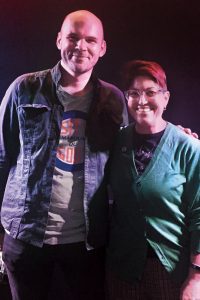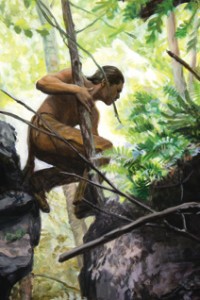2019 in Review: From Haunted Landscape to Hollywood Costume by John Langan
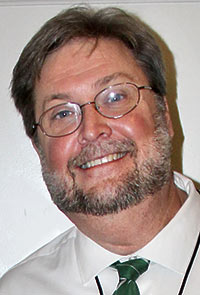
The most impressive novel of 2019 was Michelle Paver’s Wakenhyrst. It’s an utter triumph of a book, a pitch-perfect evocation of the stories of M.R. James and A.C. Benson filtered through a 21st-century sensibility; the result is reminiscent of Sarah Waters’s The Little Stranger. Concise and intense, filled with references to the tradition of English ghost stories, Paver’s novel succeeds on a number of levels. Starting with her 2010 novel, Dark Matter, and continuing with 2016’s Thin Air, Paver has been writing ghost stories distinguished by their vividly evoked settings and the struggles of their protagonists. Wakenhyrst is a more-than-worthy addition to their ranks.
If Wakenhyrst was the most impressive novel of 2019, it was not the only impressive work to appear. John Hornor Jacobs’s A Lush and Seething Hell brought together “The Sea Dreams It Is the Sky”, one of 2018’s standouts, with a new, longer fiction, “My Heart Struck Sorrow”, which is every bit the equal of the earlier narrative. The resulting volume was impressive enough to send a reader searching through Jacobs’s back catalog to catch up on the writing of a greatly underappreciated writer. S.P. Miskowski’s The Worst is Yet to Come returned to her town of Skillute WA in order to inaugurate a new pair of novels and to dig deeper into the location’s corrupt soil. Cherie Priest’s The Toll was similarly concerned with bad places. With The Reddening, Adam Nevill expanded upon elements in his personal mythology, creating a gripping tale of folk horror. An exercise in brilliant prose and narrative invention, Nina Allan’s The Dollmaker may be as good a book as Wakenhyrst. In many ways, 2019 was Nicole Cushing’s year, as she published a wonderfully dark meta-narrative, A Sick Gray Laugh, and a terrific novella, The Half-Freaks. Like S.P. Miskowski, Cushing is one of those writers who has been building an unsettling body of fiction of singular vision and quality. The same might be said of Damien Angelica Walters, the appearance of whose second novel, The Dead Girls Club, at the end of the year was a welcome event. Jayaprakash Satyamurthy’s fabulous Strength of Water concerned a young woman and man who discover themselves able to exchange bodies, a revelation which plays out against the backdrop of recent Indian history, and led to some truly fantastic destinations. Craig Laurence Gidney’s A Spectral Hue considers the intersection of the creative, the unearthly, and the abject. John D. Taff’s The Fearing brought back eighties-style disaster fiction in four fast-moving installments.
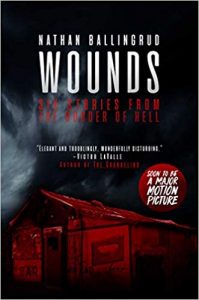 2019 also brought a number of strong debut novels. Carrie Laben’s A Hawk in the Woods uses a road trip to tell the story of a pair of sisters whose family history derived from Lovecraft’s “The Thing On the Doorstep”. Brian Hauser’s Memento Mori combined the history of art-house film with elements from Robert Chambers’s The King in Yellow mythology. Shaun Hamill’s A Cosmology of Monsters was a beautifully written chronicle of one family’s decades-long encounters with madness and monsters.
2019 also brought a number of strong debut novels. Carrie Laben’s A Hawk in the Woods uses a road trip to tell the story of a pair of sisters whose family history derived from Lovecraft’s “The Thing On the Doorstep”. Brian Hauser’s Memento Mori combined the history of art-house film with elements from Robert Chambers’s The King in Yellow mythology. Shaun Hamill’s A Cosmology of Monsters was a beautifully written chronicle of one family’s decades-long encounters with madness and monsters.
When it comes to collections, it’s even more difficult to pick a favorite. A year that stretched from Brian Hodge’s Skidding Into Oblivion to Joe Hill’s Full Throttle, with in between them Nathan Ballingrud’s Wounds, Brian Evenson’s Song for the Unraveling of the World, Laura Mauro’s Sing Your Sadness Deep, Paul Tremblay’s Growing Things, Thomas Tessier’s World of Hurt, Karen Russell’s Orange World, Georgina Bruce’s This House of Wounds, Matt Cardin’s To Rouse Leivathan, and S.L. Edward’s Whiskey and Other Unusual Ghosts, is a year over-brimming in riches. A few of these writers are still early in their careers, a few further along, the majority somewhere in the broad middle, many hitting their strides. Together, they’re evidence of the vitality and variety of the horror field, and there isn’t one that doesn’t reward attention. This said, Tremblay’s Growing Things stands out for the excellence of its prose, the inventiveness of its conceits, and its overall ambition. While more than sufficient to stand on its own, it serves as a fine capstone to his recent novels.
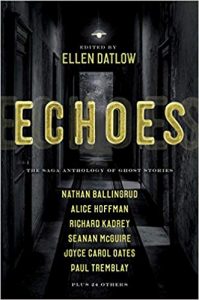 In terms of anthologies, Ellen Datlow’s 800-plus page selection of ghost stories, Echoes, was the literal and figurative elephant in the middle of the room. It’s a monumental achievement, one bringing together an impressive array of responses to its topic. (In the interest of full disclosure, I should add that I have a story in this volume.) Echoes leads a group of anthologies whose topics include witchcraft (Golden & Deering’s Hex Life), a tribute to David Cronenberg (Richard & Vidito’s The New Flesh), mannequins (Burnett’s Mannequin), a tribute to Hammer films (Raab’s Behold the Undead of Dracula), the erotic bizarre (Dwyer’s Pluto in Furs), and the weird (Gable & Dombrowski’s Nowhereville and Wilson’s Nox Pareidolia). The writers featured in these volumes range from the well-established (Kathe Koja and Jeffrey Thomas), to the new (Gwendolyn Kiste and Michael Wehunt), to those in-between (Matthew Bartlett, Gemma Files, and S.P. Miskowski).
In terms of anthologies, Ellen Datlow’s 800-plus page selection of ghost stories, Echoes, was the literal and figurative elephant in the middle of the room. It’s a monumental achievement, one bringing together an impressive array of responses to its topic. (In the interest of full disclosure, I should add that I have a story in this volume.) Echoes leads a group of anthologies whose topics include witchcraft (Golden & Deering’s Hex Life), a tribute to David Cronenberg (Richard & Vidito’s The New Flesh), mannequins (Burnett’s Mannequin), a tribute to Hammer films (Raab’s Behold the Undead of Dracula), the erotic bizarre (Dwyer’s Pluto in Furs), and the weird (Gable & Dombrowski’s Nowhereville and Wilson’s Nox Pareidolia). The writers featured in these volumes range from the well-established (Kathe Koja and Jeffrey Thomas), to the new (Gwendolyn Kiste and Michael Wehunt), to those in-between (Matthew Bartlett, Gemma Files, and S.P. Miskowski).
Some of those same writers have appeared in the journal Vastarien, which continues to publish consistently excellent fiction and essays. The second volume of Thinking Horror considered the so-called horror boom of the 1970s and ’80s and included a number of excellent, far-ranging interviews. Several collections of essays and interviews rounded out the best of the year’s non-fiction: Orrin Grey’s Revenge of Monsters from the Vault, T.E.D. Klein’s Providence After Dark, Stephen Volk’s Coffinmaker’s Blues, and Robert Waugh’s The Tragic Thread in Science Fiction. Finally, Mallory O’Meara’s The Lady from the Black Lagoon offers a welcome look at the career of Milicent Patrick, who was responsible for the design of The Creature from the Black Lagoon.
John Langan is the author of two novels, The Fisherman (2016) and House of Windows (Night Shade 2009), and two collections of stories, The Wide Carnivorous Sky and Other Monstrous Geographies (2013) and Mr. Gaunt and Other Uneasy Encounters (2008). With Paul Tremblay, he co-edited Creatures: Thirty Years of Monsters (2011). One of the founders of the Shirley Jackson Awards, he served as a juror for its first three years. He lives in New York’s Mid-Hudson Valley with his wife and younger son.
This review and more like it in the February 2020 issue of Locus.
 While you are here, please take a moment to support Locus with a one-time or recurring donation. We rely on reader donations to keep the magazine and site going, and would like to keep the site paywall free, but WE NEED YOUR FINANCIAL SUPPORT to continue quality coverage of the science fiction and fantasy field.
While you are here, please take a moment to support Locus with a one-time or recurring donation. We rely on reader donations to keep the magazine and site going, and would like to keep the site paywall free, but WE NEED YOUR FINANCIAL SUPPORT to continue quality coverage of the science fiction and fantasy field.





